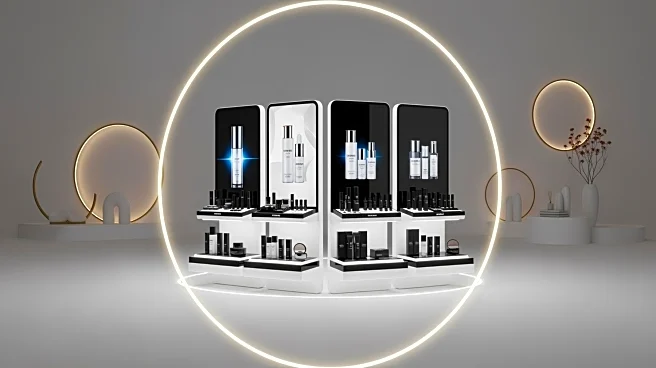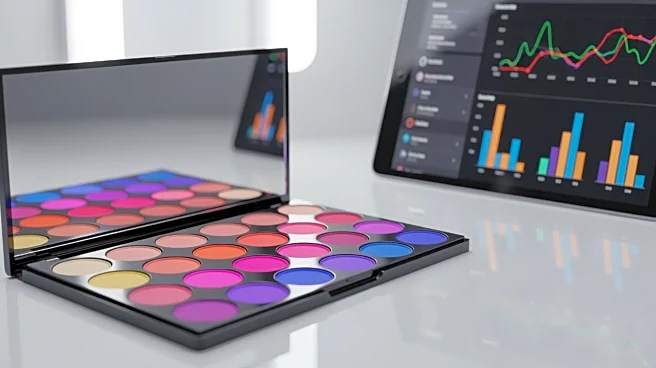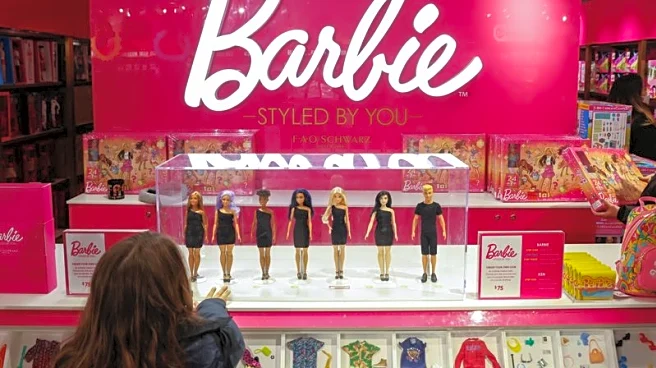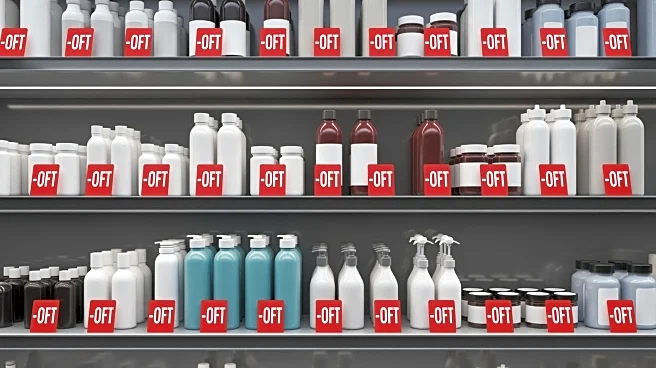What's Happening?
At Shoptalk Fall 2025 in Chicago, industry leaders discussed the evolving landscape of beauty retail, emphasizing the shift towards digital-first strategies and the importance of brand credibility. Jacqueline Flam from NielsenIQ and Jeremy Lowenstein
from Milani Cosmetics shared insights on the growing influence of digital platforms and the demand for transparency in the supply chain. Digital beauty sales in North America have surged by over 20%, driven by platforms like TikTok Shop and Amazon. Generative AI tools are reshaping consumer decision-making, prompting brands to prioritize digital strategies. The event also addressed challenges such as inflation and supply chain disruptions, with a focus on diversifying sourcing and inventory planning for the holiday season. Wellness-centric innovation was highlighted as a significant growth opportunity, with beauty evolving into a holistic lifestyle category.
Why It's Important?
The discussions at Shoptalk Fall 2025 underscore the critical need for beauty brands to adapt to a rapidly changing retail environment. The shift towards digital-first strategies reflects broader consumer trends, where online platforms are becoming the primary mode of product discovery and purchase. This transformation impacts how brands engage with consumers, requiring them to maintain visibility and adapt to AI-influenced search ecosystems. The emphasis on transparency and brand credibility highlights the growing consumer demand for authenticity and sustainability, which are becoming key factors in purchase decisions. Brands that successfully align their operations with these trends stand to gain consumer trust and drive growth, while those that fail to adapt may struggle to maintain relevance in a competitive market.
What's Next?
As the holiday season approaches, beauty brands are expected to focus on ensuring their e-commerce platforms are well-stocked and supported by predictive analytics. The continued rise of digital sales will likely push brands to further integrate AI tools into their marketing strategies. Additionally, the emphasis on wellness-centric innovation suggests that brands will explore new product categories that intersect with self-care rituals. The need for transparency and alignment across departments will drive brands to develop new measurement frameworks that go beyond traditional sales metrics, incorporating consumer sentiment and engagement quality. These developments will shape the future of beauty retail, influencing how brands strategize and execute their initiatives.
Beyond the Headlines
The shift towards digital-first strategies and increased transparency in the beauty industry may have broader implications for consumer behavior and brand operations. As consumers become more informed and discerning, brands will need to ensure their values and practices align with consumer expectations. This could lead to a reevaluation of marketing strategies, where emotional storytelling and performance marketing converge to deliver meaningful messaging. The integration of purpose and performance in brand initiatives may redefine success metrics, focusing on long-term brand equity rather than immediate sales. These changes could foster a more sustainable and consumer-centric industry, where trust and authenticity are paramount.














